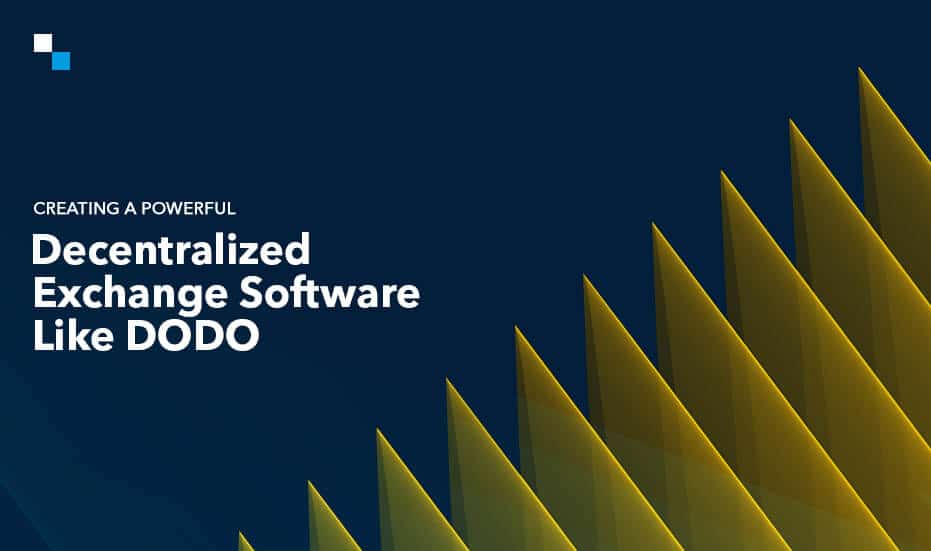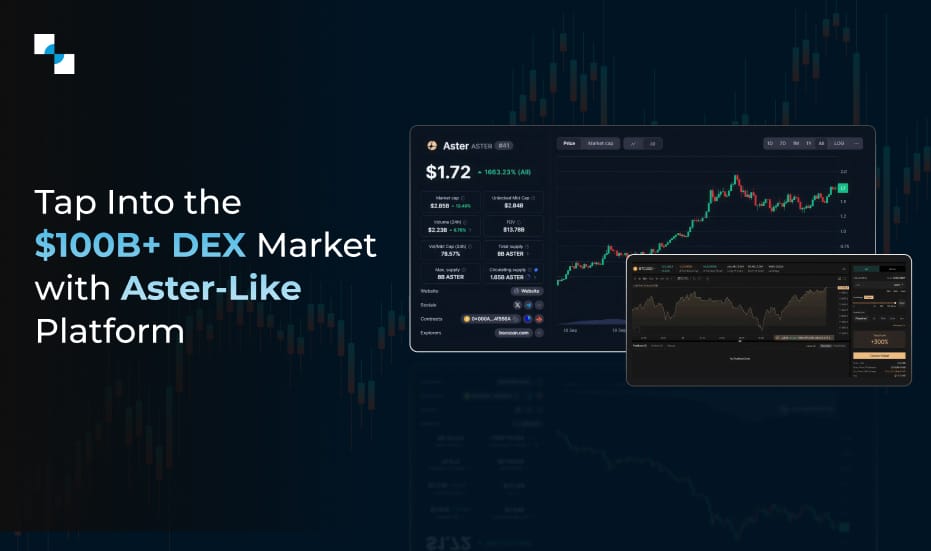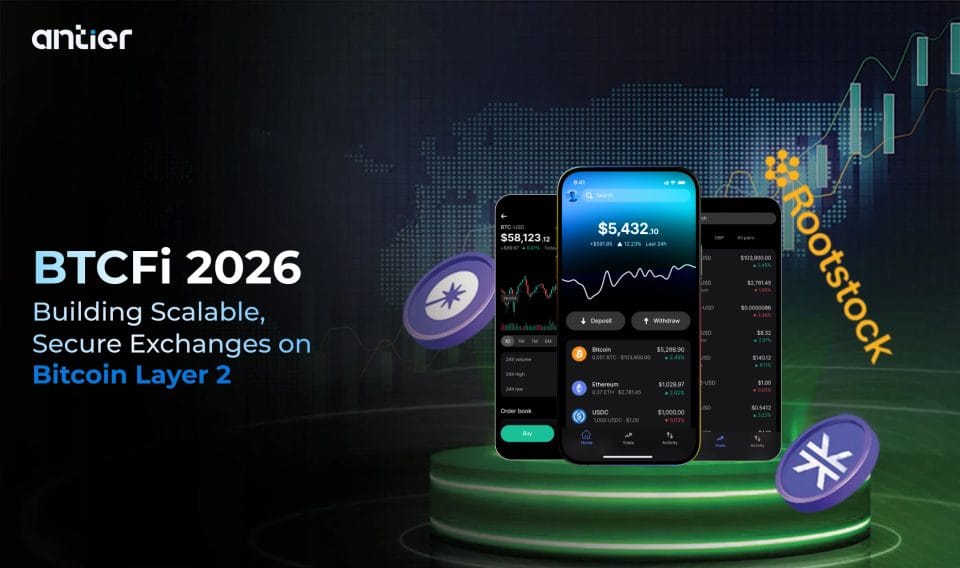We are living in an era where we can use digital currencies for buying or selling goods and services just like we use fiat currency in normal life, but on the other side, this digital money can only be traded through crypto exchanges which might either be centralized or decentralized. In this aspect, decentralized exchange software products have gained massive popularity because they are capable of offering a much more secure, fair, and customer-centric solution than centralized ones. In decentralized crypto exchange software, users could trade tokens directly from their wallet itself, making the experience more secure and ownership-oriented. Among various DEXs, DODO stands apart with its innovative market-making strategies and liquidity offerings. Those opting for a white label decentralized exchange software can integrate the features and functionalities similar to DODO.
Understanding DODO’s Unique Features –
Proactive Market Maker (PMM)
DODO’s PMM (Proactive Market Maker) algorithm is at the heart of its operations. Compared with the AMM (Automated Market Maker) relying on fixed liquidity pools, the PMM prices assets dynamically, based on market conditions, and imitates human trading behavior. This brings less slippage and impermanent loss, making DODO very friendly to both traders and liquidity providers.
Among the significant advantages of the PMM model over AMMs is its allowing liquidity providers to deposit a single token—not by pairs—thus lowering the barrier to entry for new projects. This flexibility enables the creation of various pool types, including Classic Pools and Private Pools, tailored to different trading strategies and asset classes.
Crowdpooling and Initial DODO Offerings (IDOs)
DODO’s Crowdpooling feature allows new projects to launch tokens without the risks associated with traditional fundraising methods. This mechanism promotes fair distribution and minimizes the potential for frontrunning, enhancing the overall integrity of the launch process. Projects can initiate liquidity markets efficiently, providing a seamless experience for both decentralized exchange software development experts and investors.
Cross-Chain Capabilities
DODO supports cross-chain swaps, meaning that it enables users to trade tokens across several blockchains like Ethereum or Binance Smart Chain. In doing this, DODO gives multichain support and access to the liquidity pool for customers to take advantage of price discrepancies on the various chains.
The architecture of a DODO-Inspired DEX –
Core Components
- Smart Contracts: They are the backbone of any decentralized crypto exchange software, facilitating trading, liquidity provision, and the execution of the PMM algorithm. They provide transparency and security by automating processes without intermediaries.
- Liquidity Pools: Taking inspiration from the model of DODO, these would be represented by multiple types of liquidity pools inside the DEX, like public, private, and pegged pools. This diversity caters to different user needs and trading strategies.
- User Interface: An element that users are going to be attracted to. The DEX should provide an intuitive kind of navigation, real-time data visualization, and seamless processes around transactions to enhance the trading experience.
- APIs and Developer Tools: A strong set of APIs and associated developer tools should be available for integration with other platforms. This would thus assist third-party decentralized exchange software development team in building applications on top of DEX, increasing its functionality and reach.
Security Measures
Security is paramount in the DeFi space. The decentralized exchange software must implement best practices, including:
- Audits: The smart contracts should, at regular intervals of time, be subjected to audits by renowned firms to discover vulnerabilities in the code and ensure integrity.
- Multi-Signature Wallets in Avoiding a Single Point of Unauthorized Access to Funds Management.
- Bug Bounty Programs: Make white-hat hackers bounty seekers through the identification and reporting of vulnerabilities in return for good rewards.
Core Steps to Develop DODO-Inspired Crypto Exchange Software –
Step 1: Defining a Clear Vision and Roadmap
Start by articulating the vision for your decentralized crypto exchange software. Identify your unique selling propositions (USPs) compared to existing solutions, including DODO. This roadmap should outline:
- Target Audience: Determine the intended users of your exchange, such as traders, liquidity providers, and other relevant parties.
- Market Research: Conduct an analysis of rival platforms and collect user insights to pinpoint areas of deficiency and potential opportunities.
- Tokenomics: Establish the token ecosystem intended for trading, governance, and incentivization.
Step 2: Selecting the Technology Stack
Decentralized exchanges may be established through the use of multiple blockchain technologies. When opting for a technology stack, it is essential to consider the following elements:
- Blockchain Protocol: You can make a choice between Ethereum, Binance Smart Chain, or Layer 2 solutions like Polygon based on characteristics like speed, cost, and the potential for scalability.
- Smart Contract Language: Solidity is used with Ethereum and Binance Smart Chain, Rust with Solana, or Vyper for writing smart contracts.
- Front-end Framework: React or Vue.js would be very nice for building intuitive UIs, while Web3.js or Ethers.js may provide help in interacting with blockchains.
- Database and hosting: Make use of decentralized solutions for front-end hosting and user data management, such as IPFS.
Step 3: Developing Smart Contracts
Smart contracts are the foundation of every decentralized crypto exchange software. For a DODO-inspired platform, the PMM algorithm must be accurately programmed. Pay a significant focus on:
- Liquidity Pools: Create contracts that allow users to deposit assets while maintaining flexible pricing parameters.
- Trade Execution: Develop contracts that facilitate instant trade execution and conform to the PMM mechanism.
- Governance: Implement a governance token system, allowing users to vote on core protocol changes, incentive structures, and other critical decisions.
Step 4: User Interface Development
A seamless user experience is essential for the widespread use of any decentralized crypto exchange software. Pay heed to:
- Intuitive Navigation: Make sure the user can easily get to critical features like trading pairs, liquidity pools, and analytics.
- Real-Time Data Visualization: Inbuilt responsive charts and graphs for the user to get immediate visual feedback on market conditions and trading performance.
- Wallet Integration: Provide seamless connectivity options to popular wallets like MetaMask, Coinbase Wallet, WalletConnect, and more.
Step 5: Integrating Multi-Chain Functionality
Decentralized exchanges benefit significantly from multi-chain support. This could potentially result in heightened liquidity and a wider user base being reached. Consider:
- Bridging solutions: Follow interoperability protocols like Polkadot or Cosmos to ensure that different chains’ assets can be traded on your platform.
- Cross-chain transactions: Design smart contracts through which one will be able to do trading across different blockchain protocols without compromising security and speed.

Step 6: Ensuring Security and Compliance
Ensuring the security of user assets is of utmost importance. Emphasize:
- Audits: Have smart contracts regularly reviewed by respected security companies to discover and reduce vulnerabilities.
- Bug Bounty: Implement a bug bounty to engage the power of the community in calling out potential failures in security.
- Compliance: Ensure that your decentralized crypto exchange software complies with the regulatory frameworks under which it operates. This may include introducing KYC/AML for your users.
Step 7: Testing and Launching
Before the official launch, an extensive testing procedure is essential:
- Unit Testing and Integration Testing: Test each component of the platform to ensure that everything is working as expected.
- Beta Launch: Consider launching to just key users in a beta version to get feedback and catch problems before the full roll-out.
- Design an incentive-driven marketing plan to attract early users that includes referral programs, liquidity mining, and airdrops.
Step 8: Continuous Improvement and Upgrades
The development of a decentralized crypto exchange software doesn’t end with launching. Design a feedback system to enable constant improvement:
- User Feedback: Contact users periodically for feedback on areas of improvement.
- Feature Development: Prioritizing new feature development according to interest from the community and emerging trends within the DeFi space.
- Regular security audits and updating form a cycle that keeps one ahead of the threats that might arise.
Conclusion
The development of a decentralized crypto exchange software like DODO requires a multi-faceted approach that combines the selection of the right blockchain platform, designing an attractive UI/UX design, and ensuring robust security. One must have a deep understanding of the modest yet impactful features that have catapulted DODO to success. It will help create a leading-edge DEX that not only meets current market needs but also adapts to the ever-evolving crypto landscape.
Antier, with its expertise in blockchain technology, is well-positioned to spearhead this initiative. Through meticulous planning and execution, we can integrate advanced features such as cross-chain capabilities and user-friendly interfaces, attracting both traders and liquidity providers. The focus on security and compliance will further bolster user trust in the platform. Combining broad experience in building white label decentralized exchange software with deep knowledge of market-making algorithms and liquidity provision makes us an ideal partner in the implementation of such ambitious projects. Be enabled with technical expertise and industry insights to manifest your vision into a living, breathing reality. Let’s talk!







